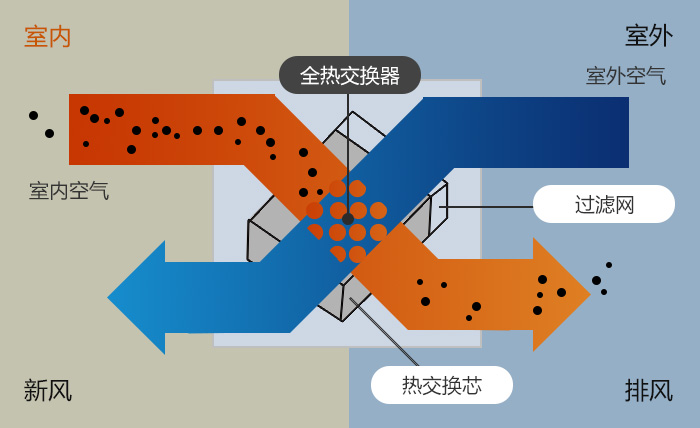24-hour service hotline:0755-29103270
Welcome to Shenzhen Zhongjing Global Purification Technology Co., Ltd.!

Author: Shenzhen Zhongjing Global Purification Technology Co., Ltd.issuing time:2018-07-24 16:14:31Pageviews:4180【smallinBig】

The main function of the clean room is to provide a healthy living and production environment, creating a service that meets lighting, temperature, humidity, noise, air flow, pressure, static and hygienic indicators such as micro-vibration environments, enabling related services and products to meet people. The environment for healthy demand provides a good space for environmental control, thereby effectively improving the product's pass rate, improving and improving the quality of service related goals.
Therefore, there are many factors in the clean room that need to be controlled. Temperature, humidity, air pressure and airflow speed are key points.
Clean room temperature humidity control
The temperature and humidity of the clean room are mainly determined according to the process requirements, but the human comfort should be considered under the conditions that meet the process requirements. As air cleanliness requirements increase, the requirements for temperature and humidity are becoming more stringent.
The specific requirements for the temperature of the purification project will be listed later, but as a general rule, as the processing accuracy increases, the requirements for the temperature fluctuation range will become smaller and smaller. For example, in the lithographic exposure process produced by a large scale integrated circuit, the difference in thermal expansion coefficient between the glass and the silicon wafer as a mask material is required to be smaller and smaller. A silicon wafer with a diameter of 100um rises by 1 degree, causing a linear expansion of 0.24um, so it must have a constant temperature of ±0.1 degrees, and the humidity value is required to be low, because after sweating, the product may be contaminated, especially sodium. In the semiconductor workshop, this workshop should not exceed 25 degrees.
High humidity can cause more problems. When the relative humidity exceeds 55%, the cooling water pipe wall is exposed. If it happens in a precision device or circuit, it can cause various accidents. Relative humidity tends to rust at 50%. In addition, when the humidity is high, dust adhering to the surface of the silicon wafer is chemically attached to the surface by water molecules in the air, which is difficult to remove. The higher the relative humidity and the adhesive force, the harder it is to remove, but when the relative humidity is lower than 30%, it is easy to cause breakdown of a large number of semiconductor devices due to the influence of electrostatic particles on the surface adsorption. The optimum temperature range for wafer production is 35 - 45%.
Clean room air pressure regulations
For most clean spaces, it is necessary to keep the internal pressure (static pressure) higher than the external pressure (static pressure) to prevent intrusion of external contamination. The maintenance of differential pressure should generally follow the following principles:
(1) The pressure in the clean space is higher than the pressure in the unclean space.
(2) The pressure in the high cleanliness space is higher than the pressure in the adjacent space of low cleanliness.
(3) The door between the clean rooms should be opened to a room with a high level of cleanliness.
The pressure difference depends on the amount of fresh air, which compensates for the amount of air that leaks through the crack at this pressure differential. Therefore, the physical meaning of the pressure difference is the resistance of air through different gaps in the clean room.
Airflow speed regulation in a clean room
The airflow velocity discussed here refers to the airflow velocity in the clean room. When discussing specific equipment, the airflow speeds of other cleanrooms will be explained.
For the turbulent clean room, because the dilution mainly reduces the indoor pollution through the air, the concept of air change is mainly adopted, and the speed concept is not directly adopted, but the indoor air speed has the following requirements;
(1) The air supply speed of the air supply outlet should not be too high. Compared with pure air-conditioned rooms, the speed drops faster and the spread angle is larger.
(2) The fan speed rate (such as side delivery) of the air supply rate should not be too large, so as to avoid the particles returning on the surface and causing pollution. Generally, it is not suitable to reach a speed of 0.2m / s.
For a parallel flow clean room (traditionally known as a laminar clean room), speed is an important indicator in cross section because it is primarily driven by the "piston extrusion" of the gas stream to remove the dye. In the past, the standard for 20gB in the United States was 0.45 m/s. However, it is well known that the amount of ventilation required at such a high speed is very large. In order to save energy, people are exploring the feasibility of reducing a wind speed.
In China, the technical measures for air purification and the design specifications of cleaning plants are as follows:
(1) Vertical parallel flow (laminar flow) clean room greater than or equal to 0.25m/s
(2) Horizontal parallel flow (laminar flow) clean room greater than or equal to 0.35m / s Research shows that the above provisions basically meet the requirements of pollution control, but that different situations should be divided into different levels, in order to better reflect energy-saving purpose.
